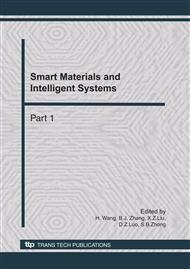p.1002
p.1007
p.1012
p.1017
p.1022
p.1027
p.1031
p.1036
p.1041
Effects of Environmental Temperature and Humidity on the Electrical Properties of Carbon Fiber Graphite Cement Mortar
Abstract:
The paper researched the electrical properties of carbon fiber graphite cement-matrix composites(CFGCC) containing carbon fiber 0.5% (mass fraction of cement, the same below) and graphite powder 0%~30%, and the impact of environmental temperature(10~50°C) and relative humidity (20%~60%) to electrical properties of CFGCC by the four-probe method and KSON high and low temperature environmental chambers. The results have shown: the electrical resistivity of CFGCC decreases with increasing the content of graphite; the relationship curve of electrical resistivity and concentration of graphite exists percolation phenomena, the percolation threshold of CFGCC is about 25%; the electrical resistivity of CFGCC have decreased with increasing temperature; the variation rate of electrical resistivity have decreased with increasing the contents of graphite; the electrical resistivity have changed a little as the humidity changed, and the trend is towards smaller as a whole.
Info:
Periodical:
Pages:
1022-1026
Citation:
Online since:
October 2010
Authors:
Price:
Сopyright:
© 2011 Trans Tech Publications Ltd. All Rights Reserved
Share:
Citation:


